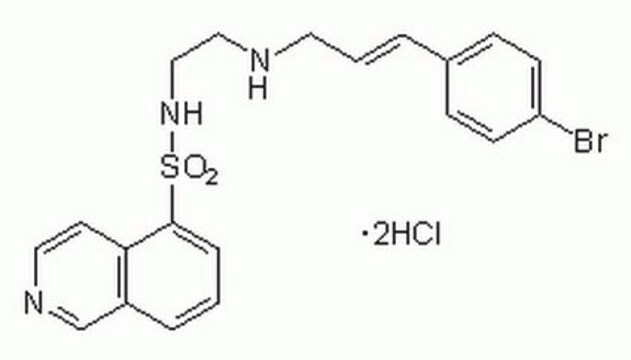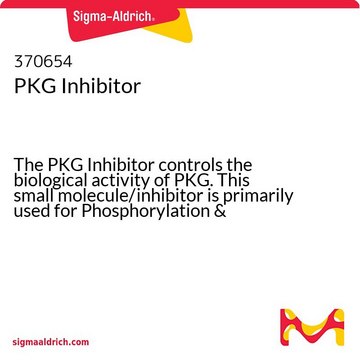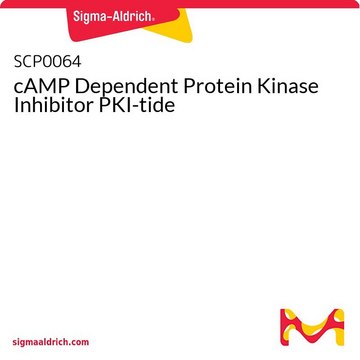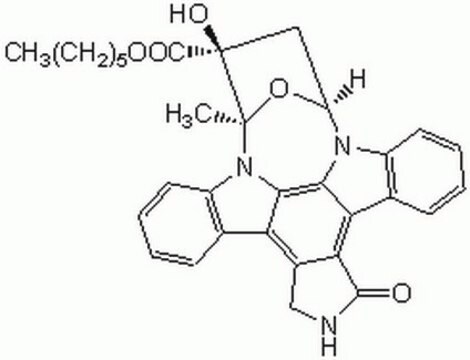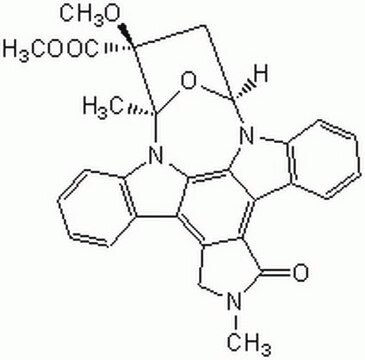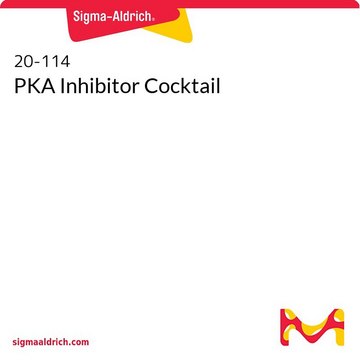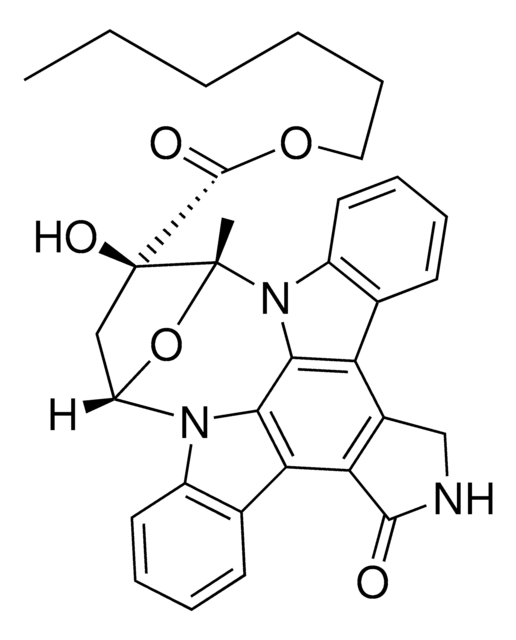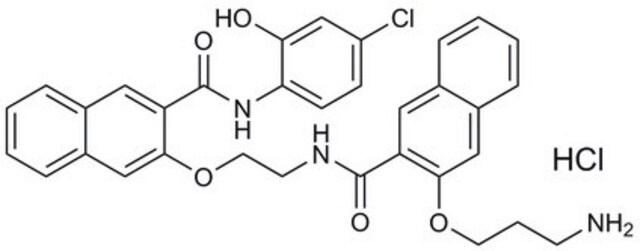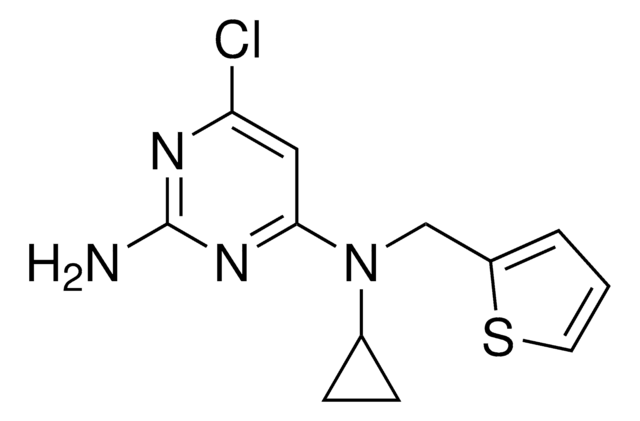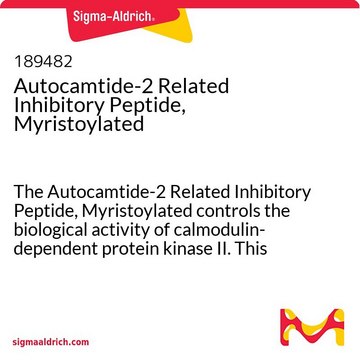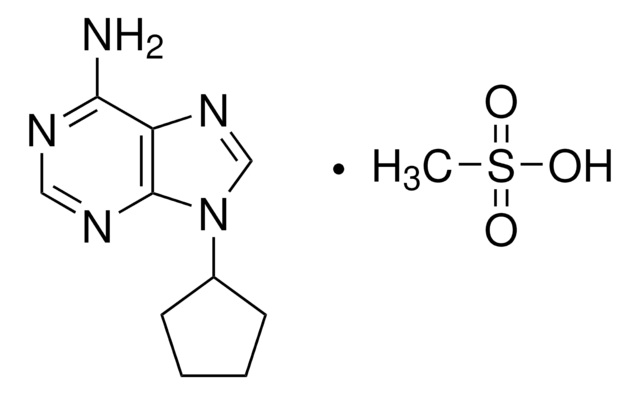476485
PKA Inhibitor 14-22 Amide, Cell-Permeable, Myristoylated
PKA Inhibitor 14-22 Amide is myristoylated at the N-terminus that enhances its cell-permeability. The non-myristoylated version is shown to be a specific inhibitor of PKA (Ki = 36 nM).
Synonym(s):
PKA Inhibitor 14-22 Amide, Cell-Permeable, Myristoylated, PKI 14-22 Amide, Cell-Permeable, Myristoylated Protein Kinase A Inhibitor Amide 14-22, Cell-Permeable, Myr-GRTGRRNAI-NH₂, Protein Kinase A Inhibitor 14-22 Amide, PKA Inhibitor XIII
About This Item
Recommended Products
Quality Level
Assay
≥95% (HPLC)
form
lyophilized
manufacturer/tradename
Calbiochem®
storage condition
OK to freeze
desiccated (hygroscopic)
solubility
water: 1 mg/mL
shipped in
ambient
storage temp.
−20°C
General description
Biochem/physiol Actions
cAMP-dependent protein kinase
Warning
Sequence
Physical form
Reconstitution
Other Notes
Rimon, G., and Rubin M. 1998. Biochim. Biophys. Acta 1380, 289.
Harris, T.E., et al. 1997. Biochem. Biophys. Res. Commun. 232, 648.
Muniz, M., et al. 1997. Proc. Natl. Acad. Sci. USA 94, 14461.
Zoukhri, D., et al. 1997. Am. J. Physiol. 272, C263.
Eichholtz, T., et al. 1993. J. Biol. Chem.268, 1982.
Ward, N.E. and O’Brian, C.A. 1993. Biochemistry32, 11903.
Walsh, D.A. and Glass, D.B. 1991. Methods Enzymol. 201, 304.
Glass, D.B., et al. 1989. J. Biol. Chem.264, 8802.
Legal Information
Storage Class Code
11 - Combustible Solids
WGK
WGK 1
Flash Point(F)
Not applicable
Flash Point(C)
Not applicable
Certificates of Analysis (COA)
Search for Certificates of Analysis (COA) by entering the products Lot/Batch Number. Lot and Batch Numbers can be found on a product’s label following the words ‘Lot’ or ‘Batch’.
Already Own This Product?
Find documentation for the products that you have recently purchased in the Document Library.
Customers Also Viewed
Our team of scientists has experience in all areas of research including Life Science, Material Science, Chemical Synthesis, Chromatography, Analytical and many others.
Contact Technical Service

